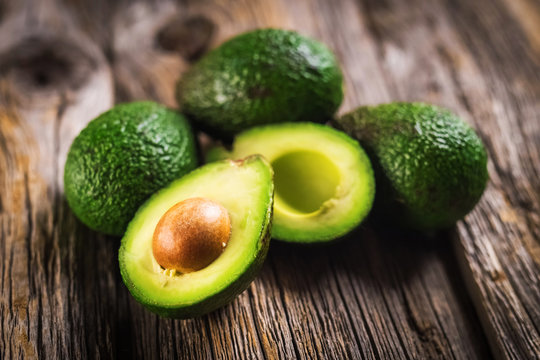Reaching those weight loss goals can at times seem impossible, but if you understand the concept of the fat burning heart rate, then this will only make your fitness journey easier. This blog will explain what the fat burning heart rate is, how to calculate it and apply practical tips to help maintain that crucial heart rate to achieve optimal weight loss.

What is a Fat Burning Heart Rate?
It is the Fat Burning Heart Rate zone in which your body does most of its work with little active efficiency in burning fat fuel. The body burns different sources of energy during exercise depending on the intensity of the exercise. While doing the low-intensity exercise, the body appreciates the use of fats. During high-intensity exercise, it prefers using carbohydrates more.
Usually, your heart rate where fats can be burnt lies at 60 to 70 percent of your fat burning heart rate. This is when the fats can efficiently be used as your body’s primary fuel. Knowing and keeping this heart rate for burning fats is very important for those who intend to lose weight.
The Science of Fat Burning
When you engage in aerobic exercise, your body goes through various energy systems; when you are at the fat burning heart rate, your body is in a state that optimally oxidizes fat. As exercise intensity picks up, your body starts burning glycogen – stored carbohydrates – for energy. Thus, staying within the fat burning heart rate zone of course remains the key to maximum fat loss.
The body uses energy depending on factors such as exercise intensity, duration, and individual fitness levels. Consequently, getting your fat-erobic fat burning heart rate will help you go about your workout if it is at the right intensity in terms of quality.
Calculating Your Aerobic Heart Rate
Calculating Your Maximum Heart Rate
Identify your maximal fat burning heart rate before you can identify your Aerobic heart rate. There is a frequently used formula to find MHR as is provided below:
MHR
220 -your age
MHR= 220-your age
For example, if you are 30 years old then your maximal fat burning heart rate is estimated to be between 190 beats per minute (bpm).
Fat Burning Heart Rate Zone
Now that you know your MHR, to find the percentage of your Aerobic heart rate Zone, simply multiply your MHR times .6 and .7. Sample work above:
Lower Limit: 190 bpm x .6 = 114 bpm
Upper Limit: 190 bpm x .7 = 133 bpm
This translates to approximately 114 – 133 bpm for your Aerobic heart rate Zone.
Keeping Your Heart in Check
For proper Aerobic heart rate maintenance, you could use a heart rate monitor or a fitness band. You’ll now receive instant feedback for you to change the level of your workout sessions. Many smartwatches and fitness applications are nowadays equipped with the capability of tracking heart rate. These can aid in keeping your heart rate within your targeted zone.
Why Maintain Your Fat-Burning Heart Rate
Successful Weight Loss
The benefit of the utilization of fat-burning heart rate is that it aids in weight loss. Exercising within this range promotes the oxidation of fats due to its facilitation of one’s ability to utilize the fat reserves as fuel. When you can train within your fat-burning heart rate zone consistently, you will naturally be experiencing a calorie deficit, which is honestly required for weight loss.
Better Cardiovascular Health
It also keeps your fat-burning heart rate handy at all times. Aerobic exercises maintain strong heart muscles; improve circulation and breathing; and therefore, increase lung capacity. Over time, it tends to lower the resting heart rate and raise the overall level of fitness in that area of the cardiovascular system.
Increased Endurance and Stamina
Training at your fat-burning heart rate also improves your endurance as well as your endurance fitness level. After you have built an a/erobic base, you are prepared for intensification. This will help you emerge and perform better in your runs, cycling, or participating in your group ÿtness classes.
Tips to Achieve and Maintain Your Aerobic Heart Rate: Exercises Tips
It would require the selection of appropriate exercises to sustain your fat-burning heart rate zone. Low to moderate-intensity aerobic activities would work best for the purpose. Some of the commonly used examples would include:
- Brisk Walking: This is one simple way through which you can keep your fat-burning heart rate.
- Cycling: This can either be within a stationary cycle or even outdoors and tends to burn the fats perfectly.
- Swimming: It involves an overall body workout with minimal intensity toward joints that would elevate heart rates.
- Running: Even more intense and still in your fat-burning zone.
Adding Interval Training
HIIT is another form of interval training that helps burn fat. Although HIIT is typically performed in short bursts of intensely exerting oneself, it can be modified to include recovery times wherein one’s heart rate decreases. This can increase overall caloric burn and enhance cardiovascular fitness at the same time as not using the fat burning heart rate.
There are various ways to integrate HIIT into your routine, but alternates between one minute of high intensity, such as sprinting, and two minutes of lower intensity, such as walking, can be adopted. This method can increase total fitness levels and assist with fat reduction.
Checking Your Heart Rate During Workouts
Continue monitoring your heart rate during your workouts as a routine. You may lessen the rate to move down from an overly high heart rate that is higher than your fat-burning rate. If the rate gets too low, then you have to up your game and raise your efforts, and move forward within the target range. Routine follow-up of your heart rate will help you come to conscious and informed choices toward weight loss.
Myths Surrounding Fat Burning Heart Rate
Busting Myths
There are lots of myths related to fat-burning heart rate, which have fueled a lot of confusion among fitness freaks. Here are some of the misconceptions.
Myth 1: You must train at low intensities to burn fats.
Even though the low-intensity workout is indeed associated with fat oxidation, higher intensities would work towards the overall fat loss process by increasing calorie burn.
Myth 2: Only long-duration cardio workouts burn fat.
Longer sessions are okay, but short, intense bouts of exercise can also help support fat burn when done consistently.
The Significance of Total Caloric Balance
Always remember to be able to achieve an overall balance in your calories for weight management. When you exercise at your fat-burning heart rate, the assurance of losing those pounds will depend solely on staying in a calorie deficit. So you must balance your exercise with a corresponding diet for you to achieve better results.
Factors That Affect Fat Burning Aside from Heart Rate
Nutrition and Diet
So, diet will highly impact your ability to hit and maintain a fat-burning heart rate. A well-balanced diet composed of whole foods includes lean proteins, healthy fats, and complex carbohydrates, which will fire up your body through workouts. You should have more fruits and vegetables on the menu because they help you get all the necessary vitamins and minerals to keep you fit.
Rest and Recovery
Rest and recovery should be included in the same level of importance to your fitness journey. Adequate sleep and rest days allow your body to repair and adapt for better performance in workouts later on. Start by getting good sleep hygiene and incorporating recovery methods like stretching, foam rolling, or yoga.
Conclusion
It is, rather, his or her capability to comprehend and maintain his or her fat-burning heart rate that makes a huge difference in the weight loss journey. Calculating the target heart rate zone and proper exercises would ensure optimal fat burning and attain fitness goals better and quicker.
Second and foremost, demythology and pointing the direction toward nutrition and recovery will always help in putting forward a healthy holistic approach to fitness. Start your journey today by monitoring and realizing your fat-burning heart rate and making some informational choices to support weight loss efforts. Lastly, just remember: consistency is the key, and every little effort you make will put you further on the road toward a healthier, fitter you.











